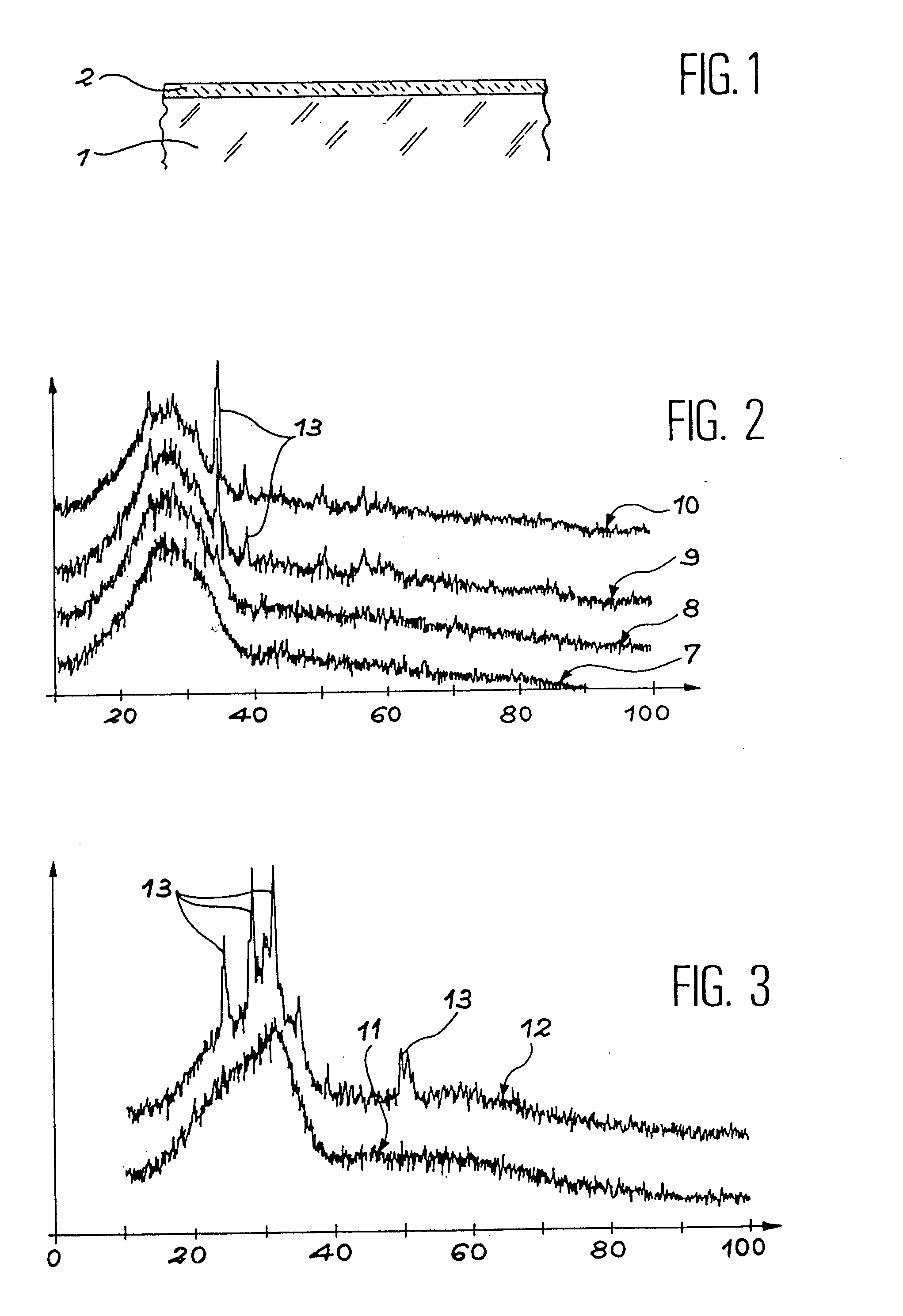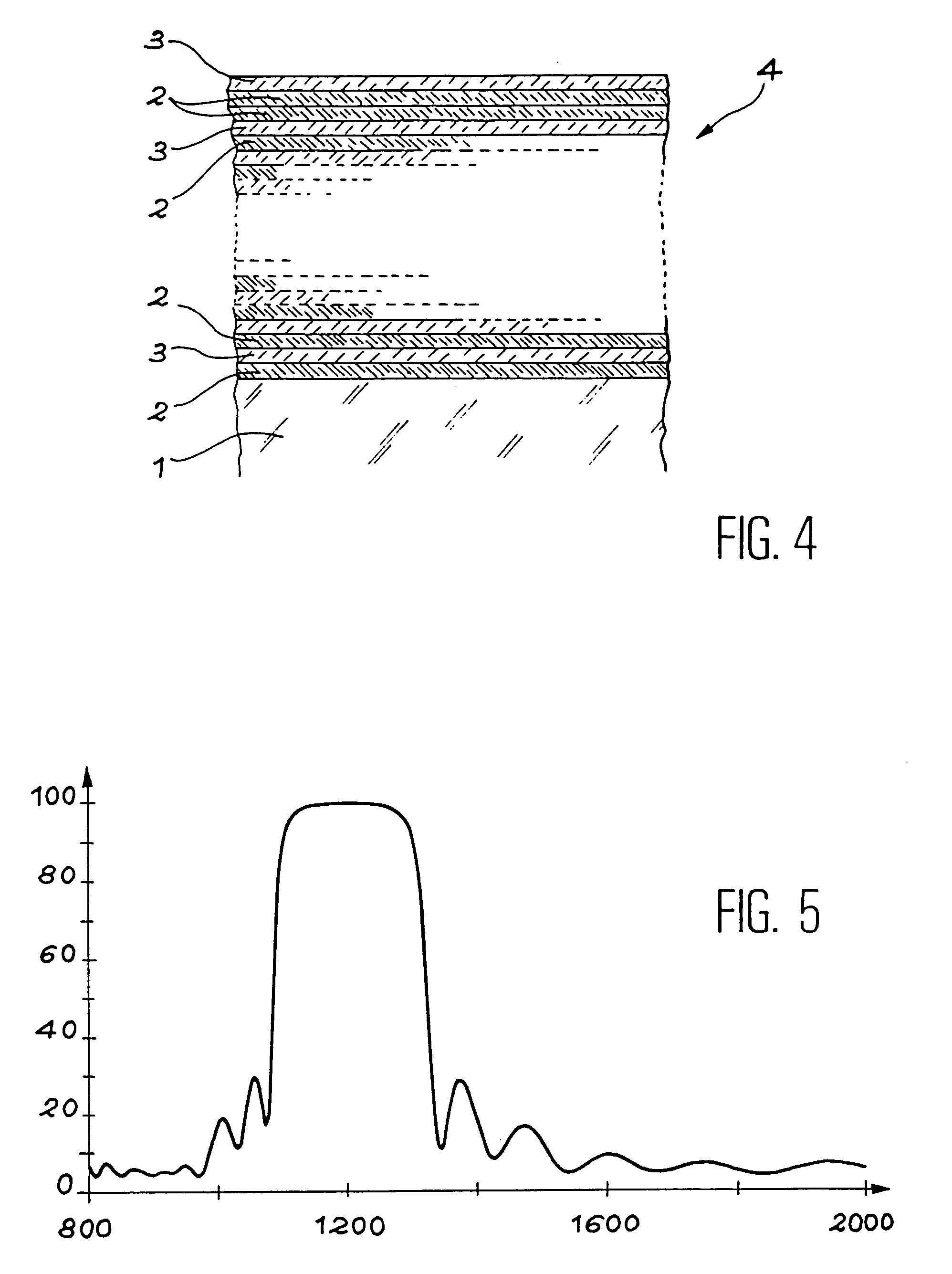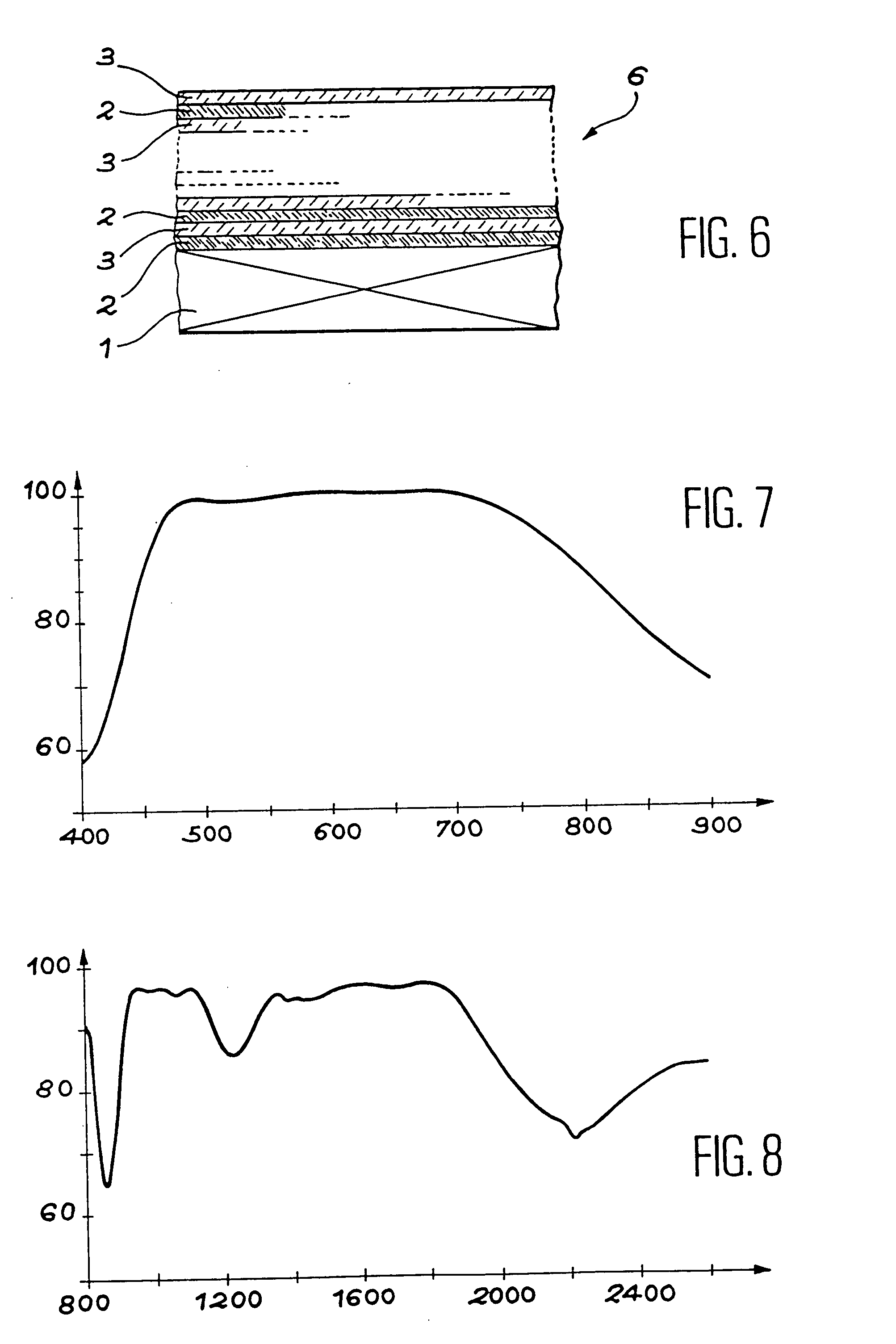Thin layer of hafnium oxide and deposit process
a technology of hafnium oxide and deposit process, which is applied in the direction of chemical vapor deposition coating, coating, instruments, etc., can solve the problems of limited defects, rapid but unsatisfactory, and damage to optical components,
- Summary
- Abstract
- Description
- Claims
- Application Information
AI Technical Summary
Benefits of technology
Problems solved by technology
Method used
Image
Examples
Embodiment Construction
OF PRODUCTION OF STACKS OF LAYERS COMPRISING LAYERS ACCORDING TO THE INVENTION
[0074] FIG. 1 shows a layer of amorphous hafnium oxide 2, according to the invention, deposited on a substrate 1. It can be checked that the hafnium oxide is amorphous, for example, by observation of the X-ray diffraction plot.
[0075] Such plotss are shown in FIGS. 2 and 3.
[0076] FIG. 2 shows curves 7, 8, 9, 10. The curves represent in arbitrary units, the intensity of X-rays diffracted depending upon the value of the angle of diffraction.
[0077] Curve 7 shows the diffraction spectrum of a layer of hafnia produced cold (without heating of the deposit substrate).
[0078] Curves 8, 9 and 10 show diffraction spectra of a hafnia layer produced with a deposit substrate of 100.degree., 150.degree.and 200.degree. C. respectively.
[0079] FIG. 3 shows two curves 11 and 12. These curves show the diffraction spectra of hafnia layers produced either without ion bombardment of the layer during growth (curve 11), or with ion...
PUM
| Property | Measurement | Unit |
|---|---|---|
| Density | aaaaa | aaaaa |
| Metallic bond | aaaaa | aaaaa |
Abstract
Description
Claims
Application Information
 Login to View More
Login to View More - R&D
- Intellectual Property
- Life Sciences
- Materials
- Tech Scout
- Unparalleled Data Quality
- Higher Quality Content
- 60% Fewer Hallucinations
Browse by: Latest US Patents, China's latest patents, Technical Efficacy Thesaurus, Application Domain, Technology Topic, Popular Technical Reports.
© 2025 PatSnap. All rights reserved.Legal|Privacy policy|Modern Slavery Act Transparency Statement|Sitemap|About US| Contact US: help@patsnap.com



